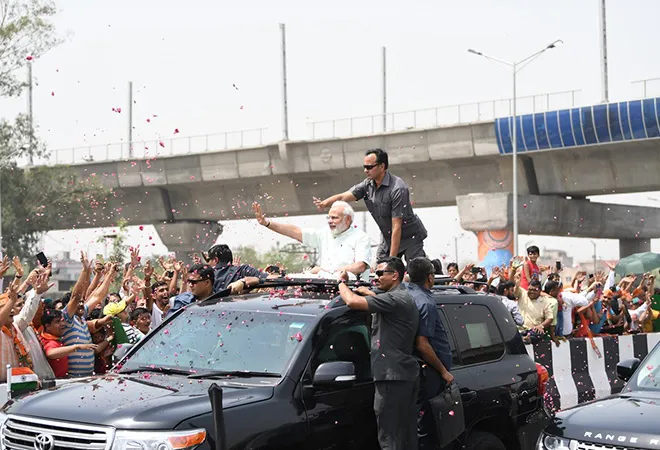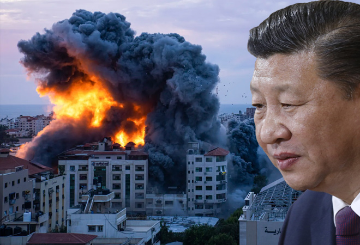In the last four years what has Modi and the NDA government done for the people? Is there more peace and stability in the country than before? Are people happier? These are simple questions but are difficult to answer. Many would say that there has been stability and there is much more inclusive growth than before. A large number of bank accounts (51.4 crore) have been opened for the poor even though half of them are non-functional. There is greater degree of digitalisation in the country and many more miles of roads and railways have been built. More toilets have been constructed in rural areas and a serious effort has been made to minimise open defecation. The whole country has been electrified. The informal sector workers have greater access to accident and life insurance than before. A very ambitious health scheme has been announced – Ayushman Bharat. Women in rural areas have been given gas connections. It does speak of a government which is actively searching for ways to gain the confidence of people and give them hope for a better future. But quite transparently the main agenda seems to be that Modi wants to return to power after the 2019 elections.
Despite all its achievements which are driven by a deeper political agenda, the impression one gets about the government’s last four years is probably not all that positive if you take the happenings in entire country into account. The background theme song of Hindutva is loud and is playing against the grain of India’s innate diversity that has existed for centuries. During the last four years the many incidents of communal tensions and lynching of people from the minority community for the possession of beef has created fear and discontent among millions of Muslims. This never happened before. The BJP has to win the confidence of all Indians and not make minorities feel excluded and threatened. This divisional politics has played havoc on all fronts and is marring the positive effects of the government’s four years in power.
Most people used to love Modi’s speeches but now whenever he speaks, it sounds hollow and the same big promises that he made before, now feel stale and uninspiring. He and his followers want us to believe that he has made India great again, but has he? One unsavory tactics of the government is to badmouth the UPA government at the first opportunity it gets. Never before has a Prime Minister himself abused and derided past leaders like Modi has in the last four years.
We are faced with a terrible scoreboard of failures on the economic front. The banking scams are something this government has to own up to and not pass the blame on to the previous government entirely. The corporate sector has continued to take advantage of the lax banking rules, both in the public and private sector banks and the result is the huge pile of NPAs which seem unsustainable and scary. The common man wonders how so many super rich businessmen got away after taking crores of rupees in loans and turning willful defaulters.
Agriculture continues to be in crisis and not able to come out of its problem of huge farmers’ debt and low price realisation for agricultural produce. Agricultural wages have remained stagnant and there is poverty in rural area. Many papers have been written by Niti Ayog to improve agricultural marketing and auctions via electronic media (eNAM) but the ground reality is that the same crisis situation continues. With almost 70 per cent of the population living in the rural areas, agrarian stress has reached a tipping point.
Industrial growth has also been lackluster and there has not been any spectacular increase in the share of manufacturing in the GDP. Export growth has inched up now and again during the last four years but there has not been a consistent and sustained rise in export growth that would give a boost to employment.
A few select economists have not been able to convince the public that 7 to 8 million jobs have been created. The official data speaks otherwise and there is no real evidence of rapid job growth. In any case, if the employment situation is so comfortable even after the shock of demonetisation when thousands of jobs were lost, it will show in the 2019 elections -- because people with new jobs will vote in favour of the NDA.
The services sector has been a good performer and jobs have been created in this sector but various protectionist measures by the United States and the European Union have created problems for IT workers finding jobs abroad. Construction activity has been dull due to problems in real estate caused by demonetisation which have persisted till now.
In recent months the falling rupee has caused more headaches than boost lackluster exports. Imports have not fallen and as a result, the current account deficit has been widening though it is still below the danger level.
Foreign institutional investors have been dumping stocks and bonds and making a beeline for the US in recent months, triggered by the falling rupee and the fast recovery of the US economy. The corporate debt is also on the rise due to the lower cost of raising money abroad in the face of high interest rates in India. Having a big amount of short term foreign debt is unsustainable and dangerous.
The NDA government was lucky to find declining oil prices when it took over in 2014. It increased revenues and helped to decrease subsidies enabling the country to remain on a stable growth path of over 7 per cent. The lucky spell seems to be over with the spurt in oil prices, the burden of which has been passed on to the people much to their chagrin. The impact of higher oil prices will be felt on the fiscal deficit causing it to widen with more forex outgo for oil. It will be difficult for the government to fund many of its ambitious programmes in its last year, including the National Health Protection Scheme aimed at half the population.
Except for maintaining a relatively high rate of GDP growth, on the economic front there seems little else to boast of. Inequality of incomes and gender inequality are rising with less women participating in the labour force than ever before -- hardly a rosy picture in front of us at the end of the four years of Modi government.
This commentary originally appeared in The Tribune.
The views expressed above belong to the author(s). ORF research and analyses now available on Telegram! Click here to access our curated content — blogs, longforms and interviews.




 PREV
PREV


